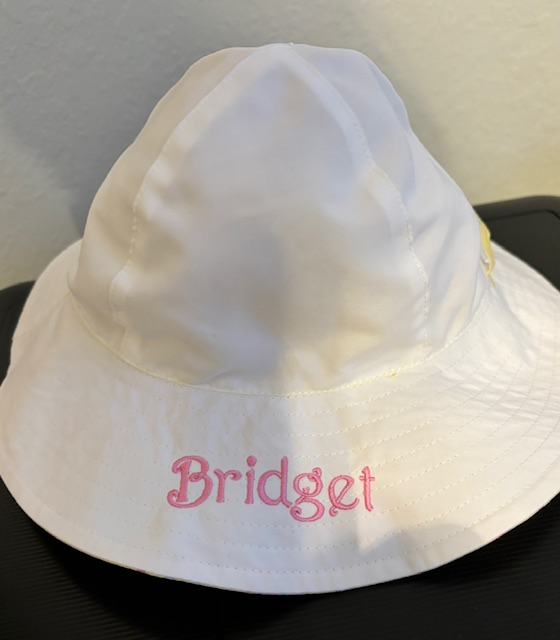Heat Transfer on T-Shirts and Aprons - Customized Layouts and Logos
The Art of Custom-made Needlework: Unlocking the Tricks to Creating Distinct and Unforgettable Designs
The secrets to producing custom embroidery styles that astound the eye and leave an enduring impact lie in a fragile balance of method, creativity, and focus to detail. As we dive right into the world of personalized embroidery, we uncover the nuanced interaction between thread option, stitch intricacy, and style customization that raises a simple garment to a job of art.
Picking the Right Needlework Threads
When picking needlework threads, what key factors should you consider to make certain the finest outcomes for your custom designs? The option of needlework thread is essential in establishing the last result of your stitched layout. Among the key considerations is the product of the thread. Various materials such as cotton, polyester, rayon, and silk supply varying degrees of luster, longevity, and structure. It is important to choose a string material that enhances the textile you are stitching on and aligns with the wanted look of the layout.
In addition, the weight or thickness of the string plays a significant role in the look of the needlework. Thicker threads can add measurement and structure to your style, while finer threads are optimal for elaborate information and small message. Additionally, considering the shade fastness and washability of the string is critical to make sure that your customized styles maintain their quality and vibrancy gradually. By thoroughly assessing these variables and selecting top notch threads that fulfill your details needs, you can enhance the visual charm and durability of your stitched creations.
Exploring Different Stitch Methods
To explore the world of 'Checking out Various Stitch Methods', one must grasp the details and nuances that each stitching approach offers the art of needlework. Various stitch techniques not just include visual passion yet likewise contribute to the total structure and dimension of the layout. One preferred stitch strategy is the satin stitch, which includes closely packed parallel stitches to develop a smooth and glossy surface area, ideal for loading in forms and developing strong lays out.
On the various other hand, the backstitch is a versatile method typically used for outlining and including fine details. It involves sewing backwards to develop a solid line of embroidery. Furthermore, the French knot stitch adds a responsive component to layouts, ideal for developing distinctive accents like blossom centers or decorative touches.
Exploring different stitch techniques enables embroiderers to play with light, darkness, and depth within their styles, elevating the aesthetic charm and creative top quality of their needlework projects. By mastering numerous sewing methods, one can unlock endless opportunities for producing one-of-a-kind and remarkable customized embroidery items.
Incorporating Personalized Layout Elements
Having discovered the ins and outs of various stitch techniques such as the satin stitch, backstitch, and French knot, the emphasis now changes in the direction of incorporating customized design elements in personalized needlework jobs. Customized design components play a crucial duty in making needlework jobs really special and unforgettable. One way to incorporate customization is by including initials, names, or significant days to the design. This not just includes a personalized touch yet additionally improves the emotional worth of the needlework item.
One more way to include tailored layout aspects is by consisting of icons or concepts that hold unique definition to the recipient or reflect their interests and personality. Incorporating a favorite flower, animal, or hobby-related icon can make the needlework style more purposeful and personalized. Additionally, choosing shades that resonate with the recipient or line up with the intended motif can better enhance the customization of the needlework job.
Grasping the Art of Color Sychronisation

One trick element of color coordination is understanding shade concept. This consists of recognizing just how different colors communicate with each other, the emotions they convey, and exactly how they can be incorporated to create aesthetically appealing designs. By applying shade theory principles, embroiderers can create harmonious shade schemes that improve the general appearance of the layout.
Additionally, taking note of comparison is essential in shade sychronisation. Using contrasting shades can assist specific components of the style pop, enhance legibility, and produce an mens white tailored shirt aesthetically vibrant needlework piece. By mastering the art of color coordination, embroiderers can raise their layouts and produce unforgettable pieces that reverberate with customers and audiences alike.
Enhancing Appearance With Advanced Embroidery Stitches
Bullion knots, on the other hand, can be made use of to develop twisted, ropelike components that add a lavish feeling to the embroidery. Experimenting with these advanced needlework stitches allows you to press the boundaries of typical needlework and develop absolutely special and aesthetically attractive appearances in your layouts.
Verdict
To conclude, the art of custom-made needlework includes a combination of selecting the right strings, checking out different stitch methods, including personalized design components, understanding shade control, and improving texture with innovative stitches. By understanding and implementing these crucial elements, embroiderers can produce unique and unforgettable layouts that display their imagination and ability. Needlework fanatics can unlock the tricks to producing attractive and bespoke pieces that stand out look at these guys and leave a long-term impact.